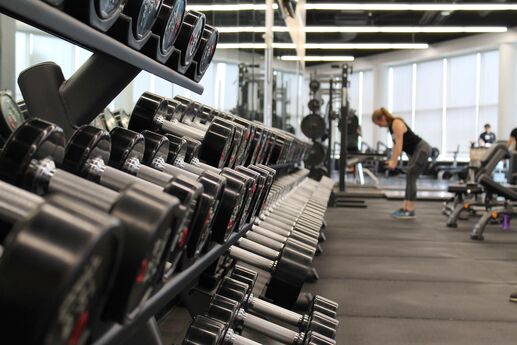The Workplace Workout
Experts agree the best time to exercise is midmorning or midday, when testosterone and general energy levels peak. But if you’re like most of us, that’s smack in the middle of your workday. So, do you relegate your workouts to sub-peak hours? Quit your job and go freelance so you can control your schedule? Not necessary, says Tom Seabourne, tae kwon do champion, TV host and author of 16 books. His latest book, The Complete Idiot’s Guide to Quick Total Body Workouts, is based on an appealing premise: You can work out every part of your body right at your desk.
“Everyone can find a few minutes a few times a day to get a quick full-body workout,” argues Seabourne. “You’ve got to get your blood pumping and get out of your seat.” By focusing on fast-twitch, Type IIB muscle fibers, Seabourne’s program will “increase your anaerobic and aerobic power, get your blood flowing, burn additional calories and help to energize your day,” he says. That’s not a bad set of outcomes, but perhaps an even more compelling argument for workplace workouts is the slate of recent studies showing that sitting for long periods of time can wreak havoc on your health -- even if you exercise regularly before or after work.
Below are 12 exercises that together will give you a total body workout, whether you have your own office or sit in a cubicle. Admittedly, a few of them may raise some eyebrows, depending on your office culture, but many can be done without anyone being the wiser. And even if your co-workers snicker at first, when they see the results -- both on your body and in your level of productivity -- they’ll be lining up at your desk for tips.
1. Swap out your core-killing office chair for a Swiss ball. Even better, if you have the means and your boss is laid back about such things, attach your computer to an exercise bike.
2. Pace back and forth while on the phone. If you have your own office, get a long cord and use the extent of it. If you’re in a cube and pacing would bother your co-workers, then march in place.
3. Do 45-degree planks on your desk while reading. First, bend your arms at a 90-degree angle and place your forearms on your desk. Then step backwards to form a plank from your shoulders to your ankles. Contract your core and hold for 30 seconds.
4. Drop a pencil and do some push-ups -- a couple of max sets (go to fatigue, generally 10 to 25 reps) a day, two to three times a week. Notice how quickly you’re able to increase your reps.
5. Do some dips in your chair before sitting down. With your heels on the ground, hands on the chair arms, and both legs straight and pointed away from you, lower yourself to the chair by bending your arms until your elbows reach a 90-degree angle. Then push back up for five to 15 reps. (If you’ve already swapped your chair for a Swiss ball, sit on the edge of your desk with a straight back, curl your hands around that same edge and place your calves on the ball, legs straight. Slide your butt away from the desk so your hips can descend toward the ground. That’s your starting position for the dip.)
6. Do squats while on a conference call. Keep doing them until you begin to lose your form or the call ends. Or until you start to talk funny.
7. Press your heels into the floor while typing. This easy and discreet move trains your quads, glutes and hams isometrically.
8. Pump your arms as fast as you can, like you’re sprinting. Go for 15 seconds, adding two seconds a week until you can do a full-minute arm-sprint.
9. Place a ball between your knees and squeeze. Do three sets of 10, and hold for three seconds per rep.
10. Do heel raises at the water cooler/fountain. Fifteen reps twice a day will work your calf muscles.
11. Do two-arm biceps curls while staring at your computer screen. Leave two (cheap) dumbbells at work and do two sets of 10 reps every other day. Bring heavier weights to the office as you get stronger.
12. Similarly, do dumbbell shoulder presses in front of your computer. Start with two sets of 10 reps and increase the weight as you get stronger.









